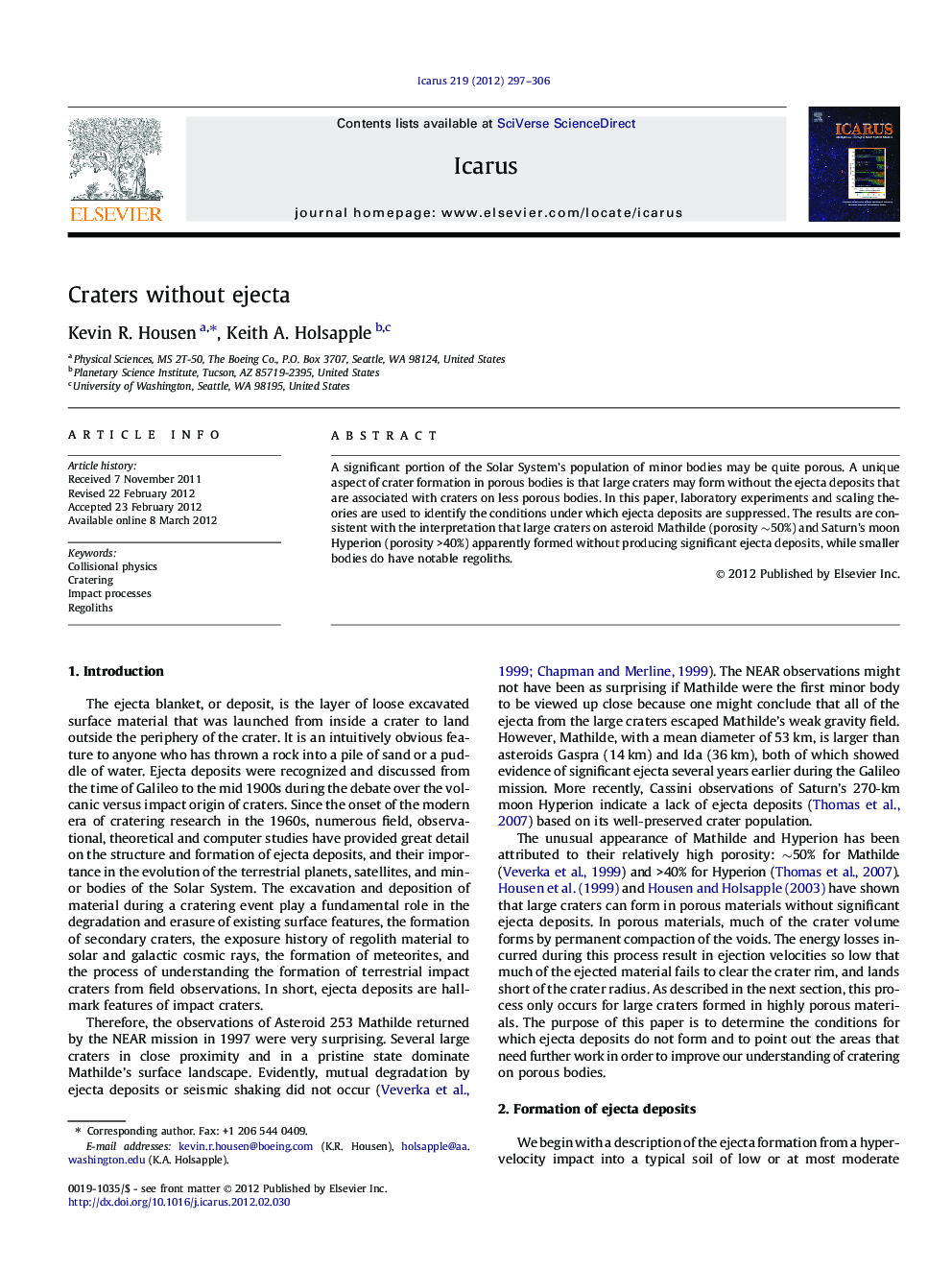| کد مقاله | کد نشریه | سال انتشار | مقاله انگلیسی | نسخه تمام متن |
|---|---|---|---|---|
| 1773498 | 1021134 | 2012 | 10 صفحه PDF | دانلود رایگان |

A significant portion of the Solar System’s population of minor bodies may be quite porous. A unique aspect of crater formation in porous bodies is that large craters may form without the ejecta deposits that are associated with craters on less porous bodies. In this paper, laboratory experiments and scaling theories are used to identify the conditions under which ejecta deposits are suppressed. The results are consistent with the interpretation that large craters on asteroid Mathilde (porosity ∼50%) and Saturn’s moon Hyperion (porosity >40%) apparently formed without producing significant ejecta deposits, while smaller bodies do have notable regoliths.
► We present a model of impact crater formation in porous Solar System bodies.
► We show that craters in porous materials can form without ejecta deposits.
► We identify conditions under which craters can form without ejecta deposits.
► The results are consistent with observations of the surfaces of small bodies.
Journal: Icarus - Volume 219, Issue 1, May 2012, Pages 297–306